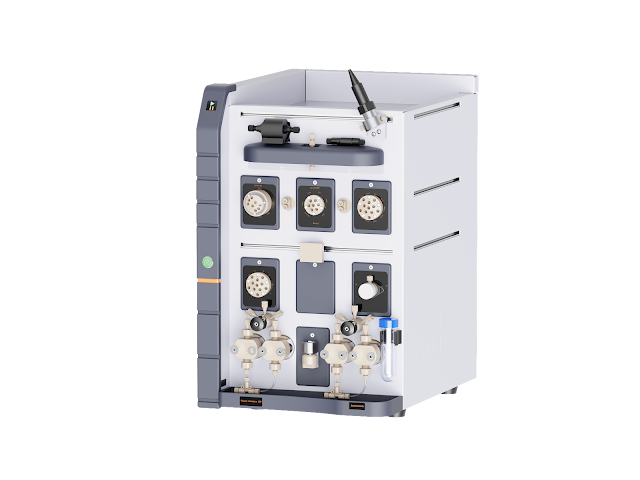Revolutionizing Research: The Role of DNA Synthesizer and Essential Lab Equipment
Imagine the challenge of isolating a single protein from a complex mixture to study its structure and function. This intricate process, known as protein purification, is fundamental in biochemical research and biotechnology. One of the most efficient techniques for this purpose is Fast Protein Liquid Chromatography (FPLC). This article delves into the significance of protein purification and explores how FPLC has revolutionized this process, offering insights into its applications and benefits.

The Importance of Protein Purification
Protein purification is essential for understanding the function of proteins, which are crucial molecules in all biological systems. Purified proteins are necessary for studying their biochemical properties, interactions, and roles in various physiological processes. This knowledge is critical for developing pharmaceuticals, understanding disease mechanisms, and creating biotechnological applications.
The process of protein purification involves several steps, including cell lysis, extraction, and purification. The goal is to isolate the target protein from other cellular components such as nucleic acids, lipids, and other proteins. Achieving high purity is often challenging but crucial for accurate downstream applications, such as crystallography, enzyme assays, and structural biology studies.
The Fundamentals of Fast Protein Liquid Chromatography
Fast Protein Liquid Chromatography (FPLC) is a high-resolution technique designed specifically for the purification of proteins. It utilizes liquid chromatography to separate proteins based on their size, charge, hydrophobicity, and affinity for specific ligands. FPLC systems are equipped with high-performance pumps, detectors, and columns that ensure rapid and efficient separation of proteins.
In an FPLC system, the sample is injected into a column packed with a stationary phase. As the mobile phase (buffer) flows through the column, proteins interact with the stationary phase based on their physicochemical properties. Different proteins elute from the column at different times, allowing for their separation and collection.
Applications of Fast Protein Liquid Chromatography in Protein Purification
Fast Protein Liquid Chromatography is widely used in various applications due to its versatility and efficiency. In the pharmaceutical industry, FPLC is essential for the production of pure protein drugs, such as insulin and monoclonal antibodies. In research laboratories, it is used for isolating proteins for structural and functional studies. Environmental science also benefits from FPLC in the analysis of proteins involved in biodegradation and bioremediation processes.
FPLC's ability to handle large sample volumes and its high reproducibility makes it a preferred choice for protein purification. It can purify proteins under native or denaturing conditions, which is crucial for maintaining protein activity or for studying protein folding, respectively.
Advantages of Using Fast Protein Liquid Chromatography
The use of Fast Protein Liquid Chromatography offers several advantages over traditional protein purification methods. FPLC provides high resolution and sensitivity, enabling the separation of proteins with similar properties. It also allows for automated, high-throughput processing, reducing the time and effort required for purification.
Moreover, FPLC systems can be easily customized with different types of columns and detectors, depending on the specific needs of the purification process. This flexibility is particularly valuable in research settings where different proteins and experimental conditions are frequently encountered.
Challenges and Future Directions in Protein Purification
Despite its advantages, protein purification remains a complex and sometimes challenging process. One of the main challenges is the loss of protein activity due to improper handling or harsh purification conditions. Additionally, the presence of contaminants such as proteases can degrade the target protein during purification.
Future advancements in FPLC technology and protein purification methods aim to address these challenges. Innovations such as more stable column materials, improved buffer systems, and enhanced automation are expected to further increase the efficiency and yield of protein purification processes.
Conclusion
The advancements in protein purification and the development of Fast Protein Liquid Chromatography have significantly enhanced the ability to isolate and study proteins. For researchers and industry professionals looking to equip their laboratories with cutting-edge purification technology, Inscinstech.com.cn offers a comprehensive range of FPLC systems and other lab equipment. By visiting Inscinstech.com.cn, you can access detailed information and expert guidance to ensure the success of your protein purification endeavors.

.jpg)

Comments
Post a Comment